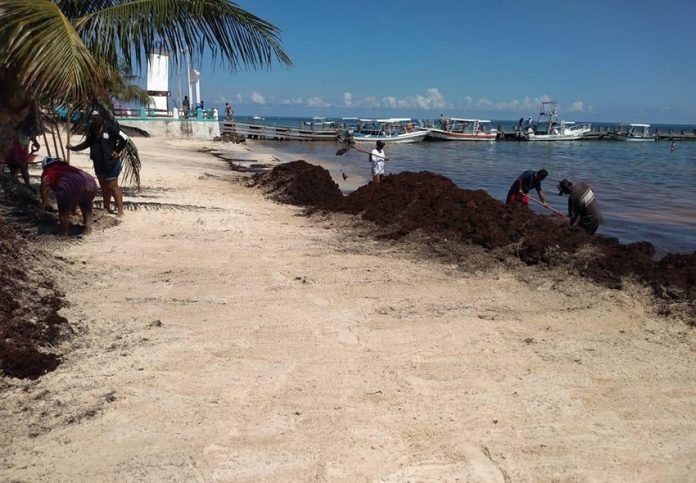Beaches in two Quintana Roo municipalities are free of sargassum, local authorities have declared.
Massive clean-up operations in Puerto Morelos, located between the resort cities of Cancún and Playa del Carmen, and Isla Mujeres have cleared the beaches of the smelly, brown seaweed that has arrived en masse on the state’s coastline this year.
“Sargassum is a nightmare for the whole state but in Puerto Morelos we fought it with the support of all municipal employees. Everybody . . . from general managers to secretaries, police and firefighters joined the efforts to pick up the seaweed. We’ve also had the support of the hotel sector . . .” Puerto Morelos Mayor Laura Fernández Piña said.
“We allocated more than 80,000 man-hours to cleaning up our beaches,” she explained, adding that up to 200 tonnes of sargassum were removed on some days.
Students, taxi drivers and fishermen also contributed to the efforts.
Fernández said that Puerto Morelos authorities in conjunction with the business sector and environmental experts have established protocols to respond to future sargassum invasions to ensure that beaches — and the tourism industry — are protected.
Kerem Pinto Aguilar, an Isla Mujeres official, said that Hurricane Michael caused more sargassum to wash up on local beaches last week but it was quickly removed.
She told a press conference that government authorities, the private sector and citizens all did their bit to ensure that the visitors could enjoy the white sands and clear waters that Isla Mujeres is famous for.
“Throughout the week we didn’t drop our guard in cleaning up Playa Centro and Playa Norte and today they look beautiful,” Pinto said.
Hundreds of thousands of cubic meters of sargassum have arrived on Quintana Roo beaches over the past five months, causing a significant drop in tourism and triggering warnings of a serious environmental disaster.
State authorities said last week that the quantity of the seaweed washing up on beaches is on the decline but it won’t disappear completely until the end of the year.
Source: El Universal (sp)
